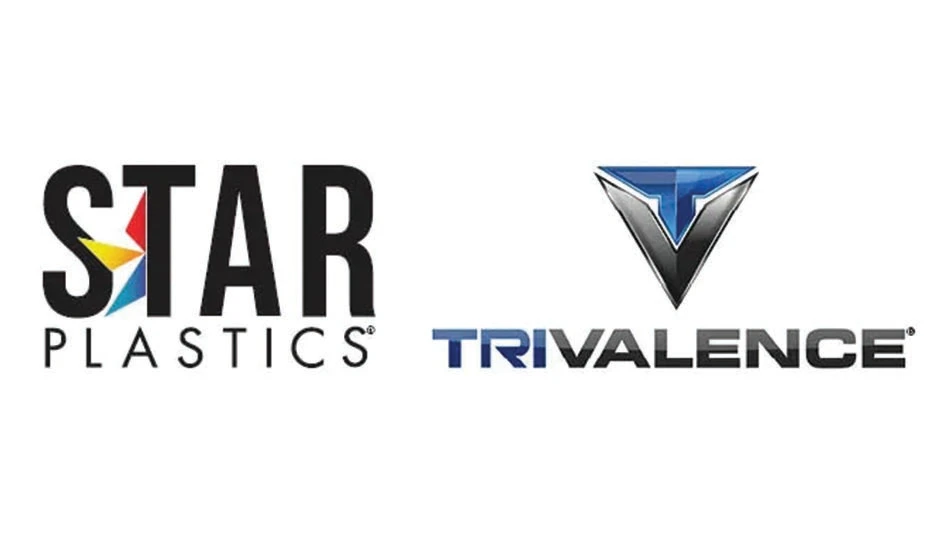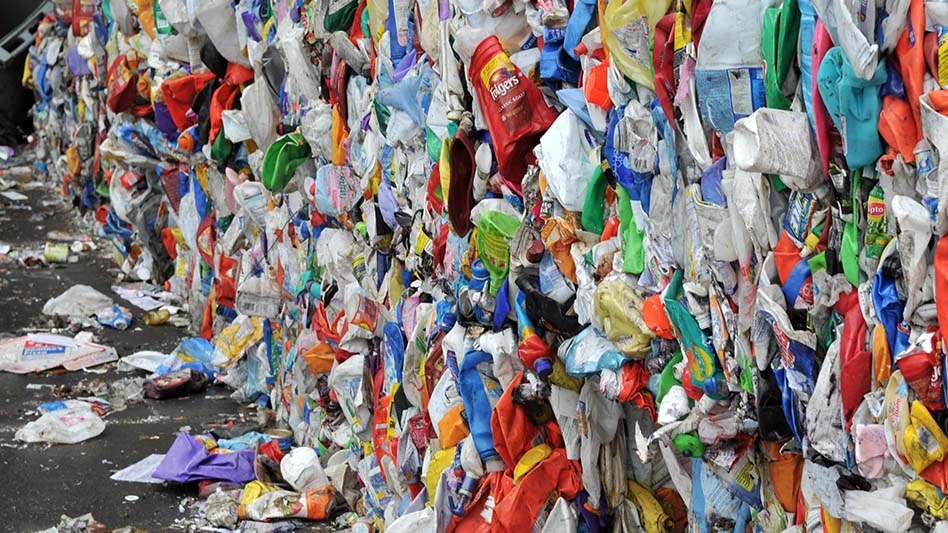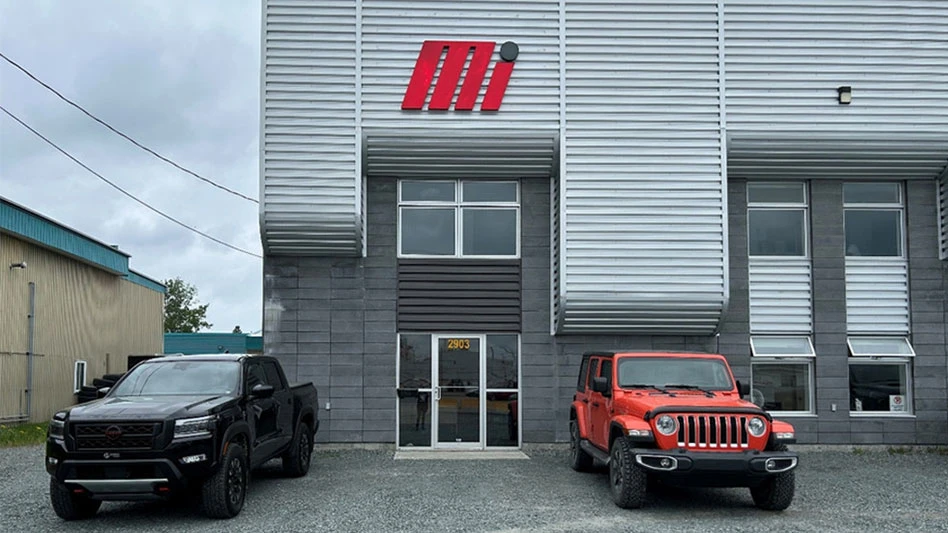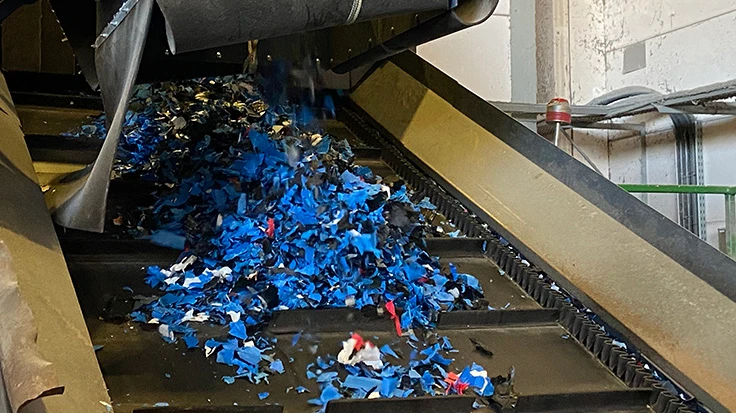Petcore, Brussels, and the European Plastics Recyclers (EuPR) also headquartered in Brussels, have reported that European post-sorting PET collection reached 1.45 million metric tons in 2010, an increase of 6.5 percent from 2009’s collection figures. The increase for the year pushed the overall collection rate in 2010 to 48.3 percent of all PET bottles on the market.
According to EuPR, more than 25 percent of the recycled PET (rPET) went into blow molding outlets that were used to produce containers in 2010. The 2010 share of fibers as an end use for recycled PET flake decreased to 39 percent, although the overall tonnage rose slightly. The report notes that close to 100,000 metric tons of rPET were used to make strapping, but there was a 25,000-metric-ton decrease in rPET used in the APET sheet market. This was attributed to higher volumes of sheet imports and the price of suitable quality RPET almost matching that of virgin PET for most of the year.
It was estimated that there is a total mechanical reclamation capacity in the European region of 1.7 million metric tons.
Exports to the Far East fell for a second year to 13 percent of collected PET, and imports of baled PET bottles from outside the area were also smaller, according to the report.
The report also finds that only two of the surveyed countries have a collection rate less than 22.5 percent target rate for plastic recovery set by the Packaging Waste Directive. Further, collection rates of greater than 70 percent have been recorded in some of the surveyed countries.
Robert Bertaggia, Petcore chairman, says. “With every European country collecting PET bottles, the high year-on-year increases of earlier years had to fall, but the 6.5 percent increase in 2010 is an excellent result. The PET industry chain has worked with compliance agencies, national bodies and European recyclers to achieve a collection rate of nearly 50 percent of all PET bottles placed on the market.”
Casper van den Dungen, chairman of the EuPR’s PET Working Group, agrees. “Capacity utilization of our recycle plants is only 79 percent at present. This provides the challenge for municipalities, other collectors and industry to increase the current collection rate beyond 50 percent to load the recycling facilities already in place.”
Sponsored Content
SENNEBOGEN 340G telehandler improves the view in Macon County, NC
An elevated cab is one of several features improving operational efficiency at the Macon County Solid Waste Management agency in North Carolina. When it comes to waste management, efficiency, safety and reliability are priorities driving decisions from day one, according to staff members of the Macon County Solid Waste Management Department in western North Carolina. The agency operates a recycling plant in a facility originally designed to bale incoming materials. More recently, the building has undergone significant transformations centered around one machine: a SENNEBOGEN telehandler (telescopic handler).
Sponsored Content
SENNEBOGEN 340G telehandler improves the view in Macon County, NC
An elevated cab is one of several features improving operational efficiency at the Macon County Solid Waste Management agency in North Carolina. When it comes to waste management, efficiency, safety and reliability are priorities driving decisions from day one, according to staff members of the Macon County Solid Waste Management Department in western North Carolina. The agency operates a recycling plant in a facility originally designed to bale incoming materials. More recently, the building has undergone significant transformations centered around one machine: a SENNEBOGEN telehandler (telescopic handler).
Sponsored Content
SENNEBOGEN 340G telehandler improves the view in Macon County, NC
An elevated cab is one of several features improving operational efficiency at the Macon County Solid Waste Management agency in North Carolina. When it comes to waste management, efficiency, safety and reliability are priorities driving decisions from day one, according to staff members of the Macon County Solid Waste Management Department in western North Carolina. The agency operates a recycling plant in a facility originally designed to bale incoming materials. More recently, the building has undergone significant transformations centered around one machine: a SENNEBOGEN telehandler (telescopic handler).
Sponsored Content
SENNEBOGEN 340G telehandler improves the view in Macon County, NC
An elevated cab is one of several features improving operational efficiency at the Macon County Solid Waste Management agency in North Carolina. When it comes to waste management, efficiency, safety and reliability are priorities driving decisions from day one, according to staff members of the Macon County Solid Waste Management Department in western North Carolina. The agency operates a recycling plant in a facility originally designed to bale incoming materials. More recently, the building has undergone significant transformations centered around one machine: a SENNEBOGEN telehandler (telescopic handler).
Sponsored Content
SENNEBOGEN 340G telehandler improves the view in Macon County, NC
An elevated cab is one of several features improving operational efficiency at the Macon County Solid Waste Management agency in North Carolina. When it comes to waste management, efficiency, safety and reliability are priorities driving decisions from day one, according to staff members of the Macon County Solid Waste Management Department in western North Carolina. The agency operates a recycling plant in a facility originally designed to bale incoming materials. More recently, the building has undergone significant transformations centered around one machine: a SENNEBOGEN telehandler (telescopic handler).
Sponsored Content
SENNEBOGEN 340G telehandler improves the view in Macon County, NC
An elevated cab is one of several features improving operational efficiency at the Macon County Solid Waste Management agency in North Carolina. When it comes to waste management, efficiency, safety and reliability are priorities driving decisions from day one, according to staff members of the Macon County Solid Waste Management Department in western North Carolina. The agency operates a recycling plant in a facility originally designed to bale incoming materials. More recently, the building has undergone significant transformations centered around one machine: a SENNEBOGEN telehandler (telescopic handler).
He continues, “Recycled PET is a reliable and sought-after feedstock in the PET value chain and sustainable, long life uses are being developed to utilize the growing supply of recycled PET. Whether PET bottles are recycled into another bottle, fiber, sheet, strapping tape or one of the new applications the energy saving will be significant“.
Get curated news on YOUR industry.
Enter your email to receive our newsletters.
Latest from Recycling Today
- Commentary: Expanded polystyrene: 98 percent air, 2 percent plastic, 100 percent misunderstood
- AMCS appoints general manager for North America
- How tariffs, regulations affect LIBs recycling in US, EU
- Schwan Cosmetics introduces packaging free of styrene, ABS
- Aimplas coordinates EU project focused on solar panel circularity
- Fresh Perspective: Brandon Sacca
- New Hampshire the Beautiful Inc. awards recycling equipment grants
- Cards acquires National Waste of Tulsa, Oklahoma






